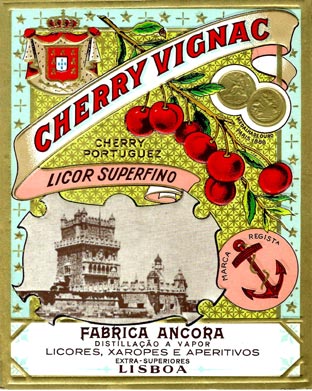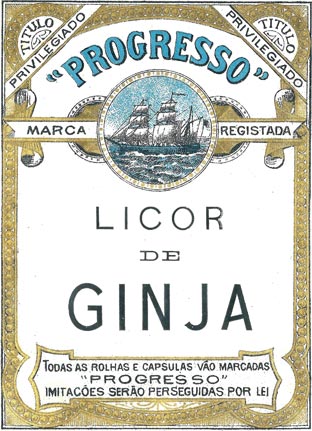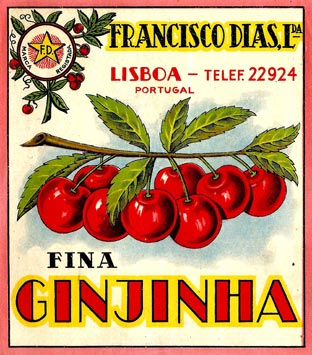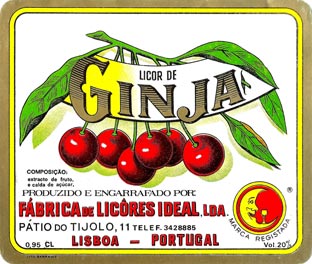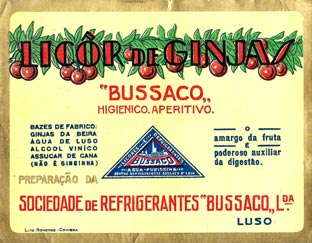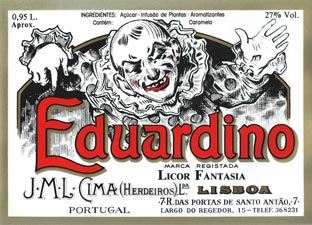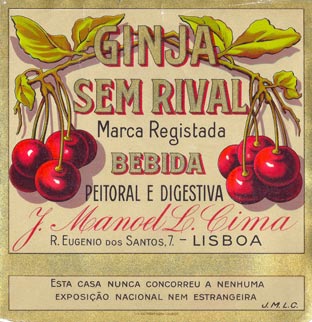In the months of May and June, the season of cherries and their sour relatives, ginjas, we had to tell you about the Ginjinha Liqueur, the typical drink of Lisbon.
In Lisbon there are establishments specialised in the production and commercialisation of this appreciated liqueur, the oldest having close to 180 years of history.
This tradition is far from having its days numbered and has been increasingly valued. Thus, we’ll immerse in this sweet drink of attractive labels that inebriates the city centre in peculiar shops with history.
Let’s go for a Ginjinha?
Enjoy the flavours of the Portuguese cuisine in Lisbon’s traditional places. Click here to find out more.
The Ginjinha Liqueur
Liqueurs are sweet alcoholic beverages that contain aguardente (alcoholic beverage that contains between 29% and 60% ABV), sugar and fruits, plants or herbs in its composition, which give it its taste and specificity.
Its origin dates back to the 13th century and it was produced for medicinal purposes because it combined alcohol, a powerful antiseptic, with the properties of herbs. With time it simply became a spirit drink although it was considered to help with digestion if consumed after a meal.
Liqueurs were very popular in the 19th century, being even appreciated by ladies since they are sweet and not strong.
Ginjinha Liqueurs old labels. Image courtesy by the collector Luís Bayó Veiga
Ginja is a sour cherry that varies between red and black in colour, and is generally used for culinary purposes, cakes, jams, chocolate fillings and, of course, liqueurs.
Ginjinha liqueur is the result from the combination of this fruit with sugar, aguardente and spices, generally cinnamon.
It is served in small glasses with or without ginjas.
Recipe
- It is recommended that after washing the ginjas, they should be dried and only after that should their stems be removed;
- Next, they should be put in a jar or a bottle with a large bottleneck until they fill 1/3 of its capacity;
- Cover the fruits with sugar, preferably white and add a cinnamon stick. Let it rest for a day;
- Fill the container with aguardente, cover it and shake it for a week to help the sugar dissolve;
- Let it rest in a dark place for several months or preferably for 1 year.
The easiest is to simply buy a bottle of Ginjinha Liqueur, but what can be hard is to choose! Every establishment we’ll tell you about, in addition to serving Ginjinha Liqueur by the glass, they also have it bottled in attractive bottles with appealing traditional images on their labels.


The Ginginhas of Downtown Lisbon
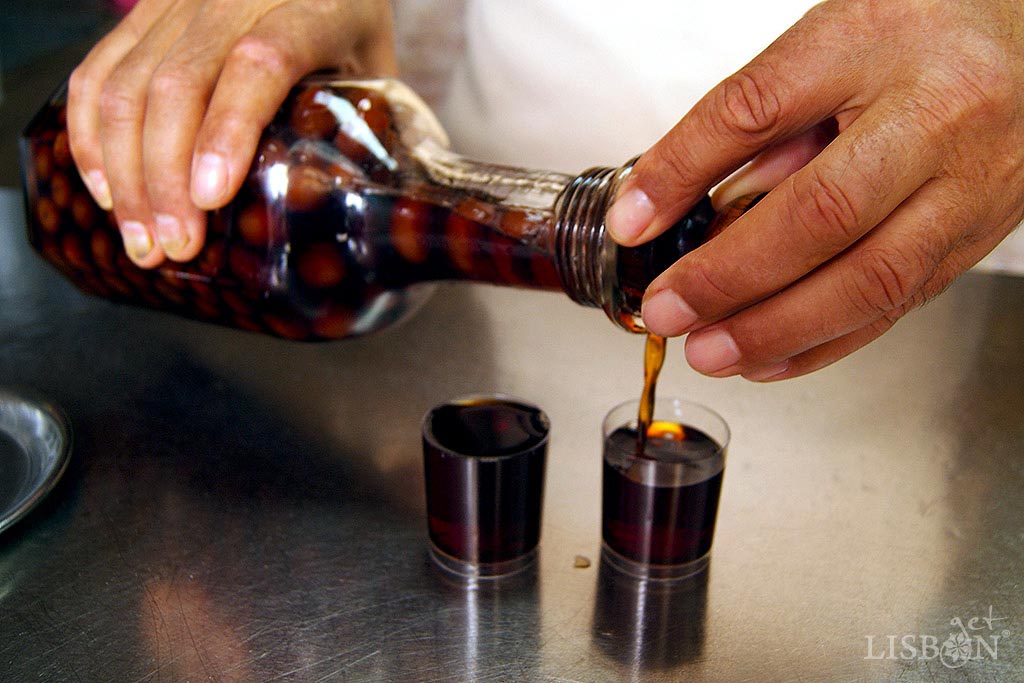
In Lisbon Downtown, near Rossio, there are four establishments specialised in Ginginha Liqueur. Hence, we call these places Ginginha!
One of their characteristics is that they are installed in small spaces, only equipped with a small counter, leading the clients to consume outside of the establishment, livening up the street with their toasts.
Let’s get to know them!
getLISBON offers a tour that lets you discover Lisbon from a unique perspective, exploring the city’s traditional shops.
“Lisbon Through Its Traditional Shops” Walking Tour
In this tour, guided by the sociologist and deep connoisseur of Lisbon, Guilherme Pereira, we will explore the oldest establishments around Rossio that have stood the test of time. Come and discover their rich history, admire their façades and unique decorations, and experience the enduring charm of a timeless Lisbon. You will surely be surprised!
We’d love to hear from you! Feel free to email us at [email protected] to book your private walking tour in English or French.
A Ginjinha – Espinheira

This is the oldest Ginjinha of Lisbon. It was founded in 1840 by a Galician, Francisco Espinheira, and the business has been run by his family for five generations. It has since then been located in São Domingos Square.
Its Ginjinha Liqueur was once produced in Rua Damasceno Monteiro, but today it is produced in the outskirts of Lisbon in Arruda dos Vinhos, a region famous for its wine production.
Within the establishment, reference is made to the countless prizes, including the Gold Medals obtained at the International Exhibition in Rio de Janeiro in 1923 and in Macau in 1926. But most fascinating are the old Belle Époque glass paintings with sayings that appeal to the quality and consumption of liqueur.
In addition to the sale of tobacco and other beverages, Capilé Espinheira is sold here, a very old drink made from avenca syrup (maidenhair fern syrup), which was much appreciated by the Portuguese, but which had fallen into disuse and which has recently been recovered.
Ginja Sem Rival

Founded in 1890 by João Lourenço Cima, just like the previous one, Ginja Sem Rival is still run by the same family. It is located, since its origin, in the beginning of Rua das Portas de Santo Antão, next to São Domingos Square.
It was truly persistent as the building where it is located, and which belonged to the iconic actor Vasco Santana, was only a few years ago completely rebuilt, keeping only the façade and the famous Ginjinha Liqueur shop.
Unlike the previous one, no prizes are shown here. This brand is based on the maxim: “This house has never competed for any national or foreign exhibition, thus taking an attitude of confidence in its quality that does not require proof.”
As famous as the ginjinha liqueur of Sem Rival is Eduardino, a liqueur that results from the infusion of plants and caramel, inspired in the mixtures that Eduardo, a clown that worked in the multi-purpose auditorium Coliseu dos Recreios, liked to make. In his honour, this liqueur was created, genuinely lisboeta, with a patented brand in 1908, which continues to be produced exclusively by this establishment and is said to have good properties for the treatment of cough.
Ginjinha Rubi

Open since 1931 in Rua Barros Queirós, once again next to São Domingos Church, this Ginjinha Liqueur house although being more recent isn’t any less typical. It is distinguished by ensuring that its liqueur is produced with the best ginjas in Óbidos, the West region that is famous for the production of Ginjinha Liqueur which is served in small chocolate cups.
In this space are highlighted the joanine revivalist style, blue and white irregular-shaped tile panels. In the frames of volutes and shells, god Baco with an ironic expression and crowned with ginjas, looks at historical scenes where peasants collect this precious fruit and producers and friars taste the famous ginja liqueur.
Here a greater variety of drinks is offered and you can also eat, which isn’t the case of the previous ones.
Ginjinha do Carmo

| Never miss another article | Subscribe here |
This house, inaugurated in 2011, is located under a staircase near Rossio Train Station in Calçada do Carmo. In this same place used to exist the “Ginjinha”, an establishment that sold tobacco and drinks (ginjinha liqueur, wine and beverages) and that operated from the mid-30s until the end of the 60s. It was then a game selling establishment and, later, after almost ten years of vacancy, the space opened up again, resuming the old tradition.
Ginginha do Carmo already has another very interesting point of sale, which resulted from a partnership between this brand, the Civil Parish of Belém and the football club Os Belenenses.
It is the Belém Kiosk, which is equipped with a terrace and located in Rua Vieira Portuense, very close to the famous pastéis de Belém (egg custard tart), where the Mounted Brass Band of the National Republican Guard performs after the Changing of the Guard.
This new project and the proliferation of street and informal selling points that are seen in the tourist areas of the city, prove that the tradition is going to last and that the Lisboetas (people from Lisbon) continue to enjoy a Ginjinha Liqueur and love to receive those who visit them with a shot of this generous liqueur.
The project getLISBON has been very rewarding and we want to continue revealing the singularities of fascinating Lisbon.
Help us keep this project alive!
By using these links to make your reservations you’ll be supporting us. With no extra costs!
• Looking for a different experience? We can create a customised itinerary based on your interests. Contact us!
• Or if you prefer tours and other activities in various destinations, take a look at GetYourGuide.
• Save time and money with a flexible Lisbon Card!


